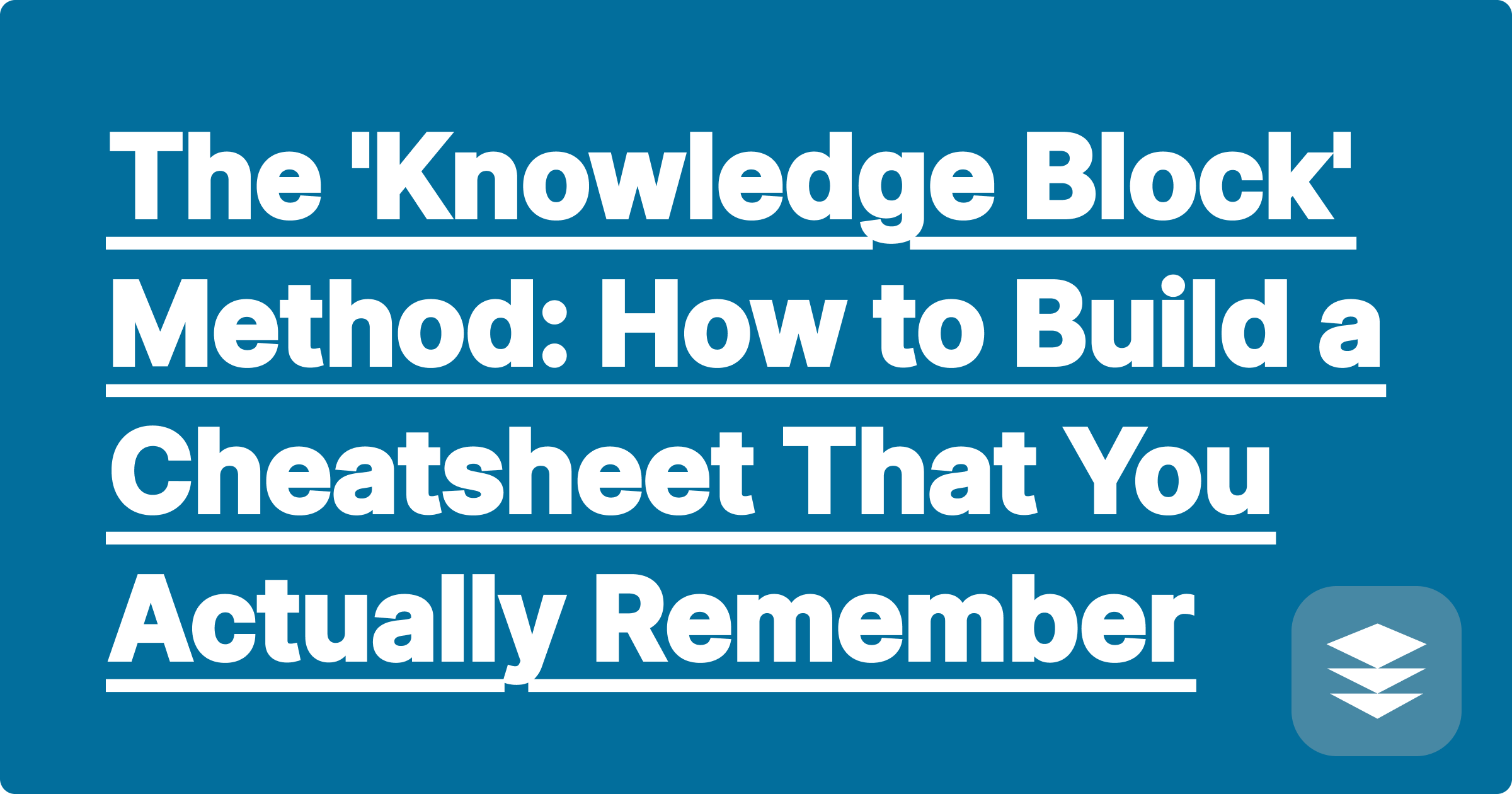
How do you make a cheatsheet? For most students, the process is simple: find the most important information and cram as much of it as possible onto a single page. It’s a process of passive transcription. You copy definitions, formulas, and examples, hoping that by writing them down, you'll somehow absorb them.
But this method is fundamentally flawed. It leads to a dense, disorganized page that's hard to use during an exam and, more importantly, it doesn't actually help you learn the material.
There is a smarter way. The "Knowledge Block" method, powered by an AI tool like GPAI Cheatsheet, transforms the creation of a cheatsheet from a passive chore into an act of active recall study method. This is how to make effective cheatsheets that not only help you during the exam but also ensure you remember the information long after.
The standard, hand-written or copy-pasted cheatsheet fails for two reasons:
You need a system that forces you to engage with the material and make decisions about its structure.
The GPAI Cheatsheet builder works on a simple but powerful principle. When you upload your course materials (PDFs, PowerPoints, etc.), the AI doesn't just summarize them. It deconstructs them into logical, bite-sized "Knowledge Blocks."
These blocks become your building materials. The AI does the tedious work of extracting the pieces, but you are the architect who decides how they fit together.
Active recall is the process of actively retrieving information from your brain, which is scientifically proven to be the most effective way to strengthen memory. Building your cheatsheet with knowledge blocks is a form of active recall.
When you use the GPAI builder, you are forced to ask yourself critical questions:
This process of curating, prioritizing, and organizing is not passive. It's an intense, focused study session that builds a deep mental map of the subject.
This method turns your cheatsheet from a static document into an interactive study guide.
The ultimate goal of a cheatsheet isn't just to be a crutch during an exam. It should be a tool that facilitates learning. The very act of building your own customizable cheatsheet from these AI-generated blocks is a more effective study technique than hours of passive re-reading. You'll find that by the time you're done building it, you may not even need to look at it during the exam.
[Stop just copying your notes. Start building your knowledge. Try GPAI Cheatsheet today and discover the power of the Knowledge Block method. Sign up for 100 free credits.]
How to Turn Your Professor's Disorganized Whiteboard Notes into a Coherent Study Guide
The 'Knowledge Block' Method: How to Build a Cheatsheet That You Actually Remember
How to Create a 'Master Formula Sheet' from All Your Courses with AI
Using AI to Find the 'Golden Sentences' in Your Textbook Readings
From Audio to Actionable Notes: A Guide to Using the AI Notetaker
How to Create a Visual Cheatsheet with AI-Generated Diagrams and Mind Maps
The 'Compare and Contrast' Cheatsheet: Using AI to Understand Nuances
How to Turn Your Class Syllabus into a Semester-Long Study Plan
The 'Definition-Example' Pair Method: Building a Practical Study Guide with AI
How to Use the AI Notetaker for Foreign Language STEM Courses